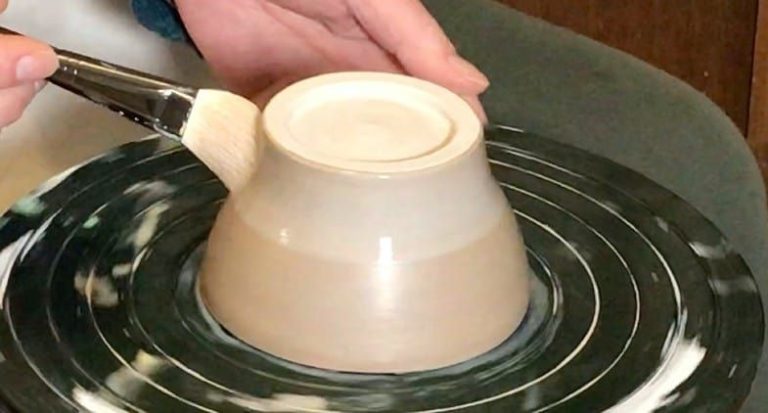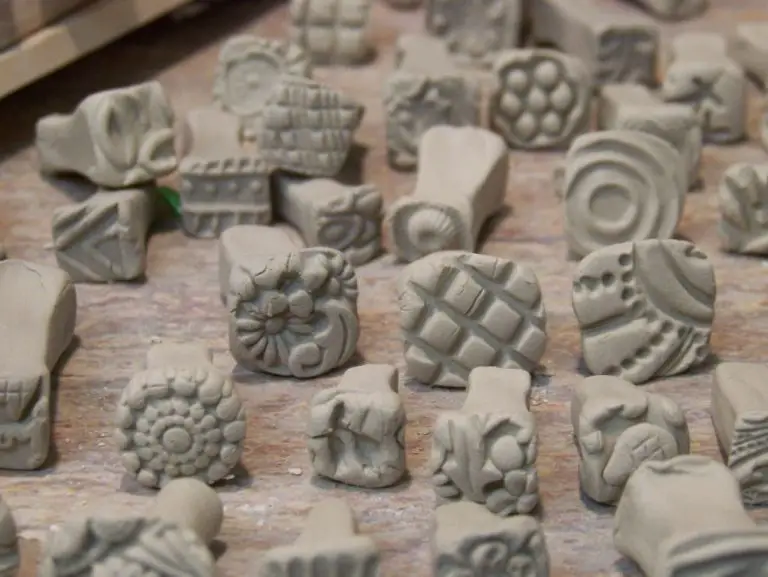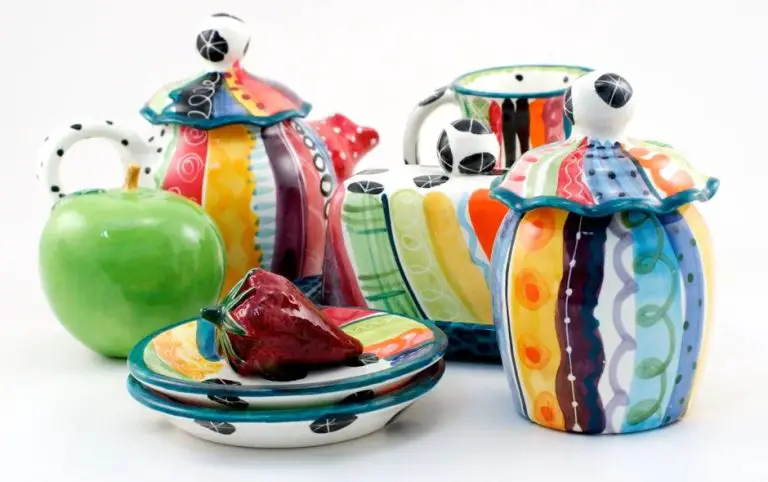How Do You Make Clay Look Marbled?
Marbled clay refers to clay that has been decorated with a colorful, paint-like finish resembling marble stone. The clay is mixed withspecially prepared paints to create flowing, marbleized patterns and designs. Marbled clay produces a vivid, artistic look on pottery, sculptures, jewelry, and other clay crafts.
Marbled clay has become a popular decorative technique among ceramic artists and clay crafters. The marbleized patterns add visual interest and an organic, natural aesthetic to otherwise plain clay pieces. Marbled finishes are often seen on vases, bowls, mugs, figurines, beads, pendants, and more. The clay marbling process allows artists to create truly one-of-a-kind designs on their clay projects.
Supplies Needed
To marble clay, you will need the following supplies:
Clay – Polymer clay works best for marbling as it holds fine details well. Sculpey and Fimo are popular brands. Avoid air-dry clays as they may not hold the marble effect once dried.
Paints/Inks – Look for acrylic paints, artist inks, mica powders, and alcohol inks in bright colors. You’ll want at least 3-5 colors. Stay away from watercolors as they will make the clay too wet.
Containers – You’ll need small containers like yogurt cups, water bottles cut in half, or paint wells to hold the paints for marbling. Glass or glazed containers work best.
Tools – Gather popsicle sticks, toothpicks, cocktail sticks, paint brushes, and anything else with a point for creating the marble pattern.
Preparing the Clay
Before you can create a marbled clay effect, you first need to properly prepare the clay. This involves two key steps – conditioning the clay, and rolling it out to the desired thickness.
To condition the clay, you’ll want to knead it thoroughly until it becomes smooth, pliable, and free of lumps or air bubbles. Take a chunk of clay and knead it vigorously with your hands, pressing into it firmly and folding it over itself repeatedly. This softens the clay by warming it up and distributing the moisture evenly throughout. Well-conditioned clay should be smooth, elastic, and not sticky.
Once conditioned, roll out the clay using an acrylic roller on a smooth, hard surface. You want an even thickness across the entire surface – approximately 1/4 inch is a good guideline. Roll out the clay in different directions to prevent sticking and help achieve uniform thickness. You may need to repeatedly roll and flip the clay. Work carefully to avoid rips or folds in the surface.
Your conditioned, rolled out clay is now ready for the marbling process!
Preparing the Paints
To create a marbled clay effect, you’ll need to use acrylic paints. Acrylics work best because they adhere well to the clay surface. You have a few options when it comes to types of acrylic paint:
- Fluid acrylics – These have a thinner, more watery consistency. They spread nicely on the clay surface.
- Soft body acrylics – These have a creamy, smooth texture that works well for blending colors.
- Heavy body acrylics – These have a thick, buttery consistency. They give nice coverage and hold their shape when marbling.
No matter which type of acrylic you use, the consistency is key. You’ll want to thin out the paints with water so they have a milky, liquidy consistency for marbling. The paints should readily drip off a paintbrush and blend together on the clay surface.
It can take some testing to get the right consistency. Start by adding small amounts of water to get the paint to an ink-like thinness. You want it to spread easily on the clay, but not be so watery that it pools together. Adjust as needed to get the right marbling effect.
Creating the Marble Effect
There are a few popular techniques used to create a realistic marble effect on polymer clay. The most common approaches involve pouring, immersing, and swirling the paints directly onto the clay’s surface.
The pouring technique involves drizzling different colored paints over the clay and allowing them to run together and mix. Start with one paint color and pour it in drizzles and lines over the surface. Then switch to a second color and repeat the pouring, allowing the two paints to blend and mingle. Continue adding colors in this fashion to build up intricate patterns.
For the immersion technique, marble the clay by fully submerging it into paints. Create your colors in small jars or containers. Dip and swirl the clay in the paints, turning and rotating it to pick up the colors. Remove and allow the excess paint to drip off before submerging into the next color. The paint left on the surface will blend and marbleize.
Swirling involves using tools to manipulate the paints directly on the clay’s surface. Apply paints and then swirl them with skewers, toothpicks, chopsticks or similar tools. Drag tools through the paints to blend the colors and create marbling effects. Try swirling in circular or straight line motions for different looks.
Combining Colors
When creating a marbled clay effect, combining colors is a key technique for achieving a realistic look. There are two main methods for mixing colors on the clay – layering and blending.
Layering involves applying one color on top of another. For example, you may start with a base coat of blue clay paint. Once dry, add a layer of yellow on top. The blue and yellow will mix optically to produce a green effect. Layer multiple colors on top of each other to create depth and visual interest.
Blending requires physically mixing two or more paints together. This can be done by brushing the edges of different colored areas into one another. You can also blend by finger-painting or using a toothpick to swirl the colors. Blending produces soft, gradual color transitions as opposed to the sharper divisions of layering.
Utilize both layering and blending when marbleizing clay. Layer some areas for defined sections of color. Blend other areas for subtle shifts in hue. Experiment with different color combinations and blending techniques to achieve an organic, dynamic look.
Marbling Tools
To create intricate marbled patterns in the clay, you’ll need some simple marbling tools. Three common items that work great are combs, skewers, and toothpicks.
Combs: Plastic combs with various tooth spacings are perfect for making wavy lines and interesting patterns in the paint. Drag the comb through the paint in different directions. Combing through the paint in alternating directions creates a beautiful swirling look.
Skewers: Bamboo skewers are another handy marbling tool. Their pointed tips let you create fine details and thin lines. Draw circles, dots, squiggles or any shapes you like by dipping the skewer in the paint and applying it to the clay.
Toothpicks: Toothpicks are great for making small dots and fine details. Dip just the tip of the toothpick in the paint and gently press it onto the clay to make polka dots or other small patterns.
By using combs, skewers, toothpicks and other simple household items, you can create endless marbled designs in the clay. Experiment with different tools and patterns for unique effects.
Removing Excess Paint
After you’ve finished marbling the clay, you’ll likely have some excess paint that remains on the surface. There are a couple techniques you can use to remove the excess paint:
Scraper – Using a plastic clay scraper or dull knife, you can gently scrape off any excess wet paint. Hold the scraper at a low angle against the clay and scrape in different directions to remove paint buildup from the crevices and surface. Be gentle so you don’t gouge the clay. Focus on areas with thick clumps of paint.
Wet cloth – A wet cloth is great for absorbing excess paint evenly across the entire marbled surface. Dampen a soft cloth or paper towel with water and gently wipe across the clay, lightly scrubbing if needed. The cloth will absorb the still-wet paint. You may need to rinse and re-dampen the cloth as you clean. Wipe gently to avoid damaging the marbled effect.
Baking Instructions
Proper baking is essential for finishing polymer clay marbling and ensuring the colors set properly. Follow these guidelines for best results:
Temperature – Bake marbled clay at the temperature recommended by the clay manufacturer, typically between 130°C and 150°C. Avoid exceeding the recommended baking temperature, as this can scorch the clay. Use an oven thermometer to verify the accuracy of your oven temperature.
Baking Times – Bake marbled clay for the minimum time specified by the clay manufacturer, usually around 15-30 minutes per 1⁄4 inch of thickness. Thicker pieces will require longer bake times. To test doneness, insert a skewer into the thickest area – if it comes out clean, the clay is finished baking. Avoid underbaking, as uncured clay will remain soft and colors may smear.
Let clay cool completely before handling after baking. Baking marbled polymer clay properly will result in durable, vivid finished pieces.
Finishing Touches
After baking the clay, there are a few options for finishing touches to make the marbled clay really shine:
Clear Coat
Applying a clear acrylic sealant or polyurethane coat will help smooth the clay and provide protection. Use quick, even strokes with a soft brush to apply 1-2 thin coats. Allow each coat to fully dry before adding the next. The clear coat will bring out the depth of the colors and give the marbled clay a glossy look.
Polishing
For an ultra high-shine finish, wet sand the baked clay starting with a fine grit sandpaper like 400 and working up to 2000 or higher. Always sand in small circular motions. Wipe away residue with a damp cloth between sanding. When satisfied with the smoothness, use a polishing compound or automobile polish to buff the sanded clay until it has a bright sheen.
Antiquing
If aiming for a more vintage, aged effect, consider applying a dark glaze or paint antiquing solution after the initial bake. Work it into the crevices and wipe away excess on the high points. This will make the colors look timeworn. Can also sand or file the edges to distress them before antiquing.



